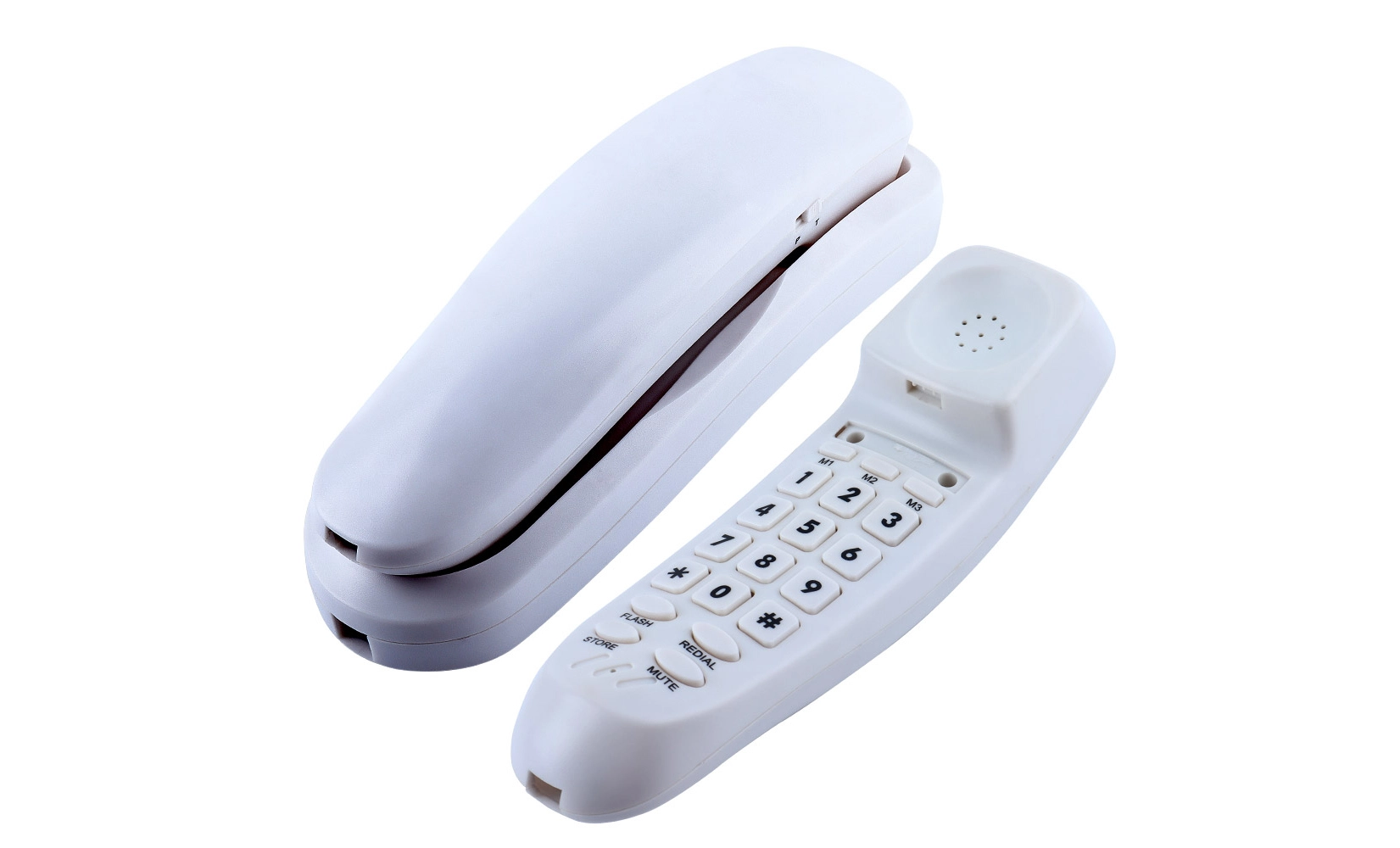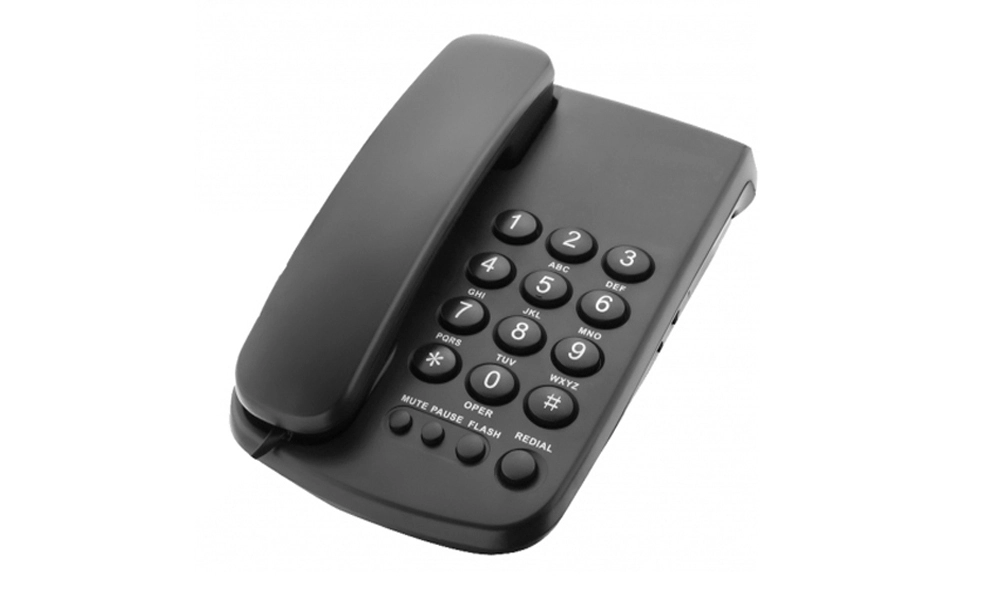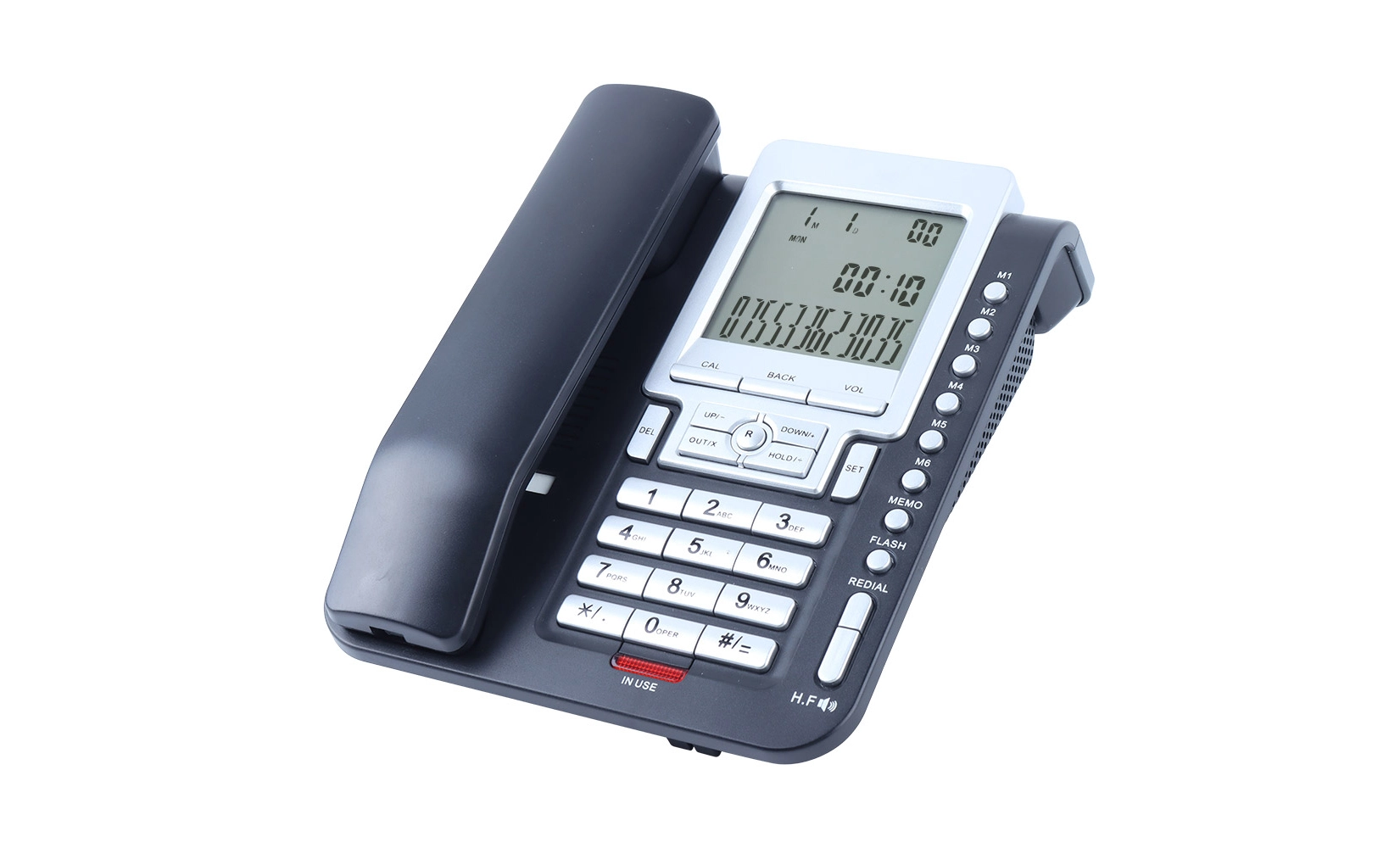The Evolution and Design of Corded Trimline Telephones
A Brief History of Trimline Phones
Corded trimline telephones emerged in the 1960s as a revolutionary design in the world of communication devices. Developed by Henry Dreyfuss Associates for Bell System, these phones were characterized by their slim profile and integrated dial or keypad in the handset. This innovative design marked a significant departure from the bulky, separate-base models that preceded them.
The trimline concept quickly gained popularity due to its space-saving attributes and aesthetic appeal. As telecommunications technology advanced, the basic trimline design adapted to incorporate new features while maintaining its core principles of simplicity and efficiency.
Key Design Features of Modern Trimline Phones
Contemporary corded trimline telephones retain the essence of their original design while incorporating modern enhancements. These phones typically feature:
- A slim, ergonomic handset that houses both the earpiece and mouthpiece
- An integrated keypad for dialing, often illuminated for ease of use in low-light conditions
- A compact base that serves primarily as a cradle for the handset
- Essential function buttons such as redial, flash, and volume control
- A ringer with adjustable volume settings
The streamlined design of corded trimline telephones makes them ideal for spaces where desktop real estate is at a premium. Their wall-mountable capability further enhances their versatility, allowing for installation in kitchens, hallways, or other areas where a traditional desk phone might be impractical.
Material Choices and Durability
Modern trimline phones are constructed with durability in mind. High-quality plastics resistant to scratches and discoloration are commonly used for the housing. The handset cord, a crucial component, is typically made of a flexible, tangle-resistant material designed to withstand frequent use without compromising its integrity.
The keypad buttons are often crafted from silicone or rubber compounds that offer a satisfying tactile response and resist wear from repeated pressing. These material choices contribute to the longevity of corded trimline telephones, often allowing them to remain in service for many years with minimal maintenance.
Cable Length and Its Impact on Usability
Standard Cable Lengths and Their Applications
The cable length of a corded trimline telephone is a crucial factor in its usability and convenience. Standard handset cord lengths typically range from 6 to 25 feet, with the most common options being:
- 6-foot cords: Ideal for compact spaces or wall-mounted installations
- 12-foot cords: Suitable for most desk or bedside table applications
- 25-foot cords: Provide extended reach for larger rooms or office spaces
The choice of cable length depends on the intended use and placement of the phone. A longer cord offers greater flexibility but may be prone to tangling or becoming a tripping hazard if not properly managed.
The Relationship Between Cable Length and Signal Quality
While longer cables provide more mobility, they can potentially affect signal quality. As the cable length increases, there's a slight risk of signal degradation due to electrical resistance and interference. However, in most residential and office settings, this effect is negligible for standard cable lengths up to 25 feet.
For situations requiring exceptionally long cords, some manufacturers offer specially designed cables with enhanced shielding to maintain signal integrity over greater distances. These cables may incorporate techniques such as twisted pair wiring or additional insulation to minimize interference and ensure clear communication.
 Cable Management and Safety Considerations
Cable Management and Safety Considerations
Proper cable management is essential for both safety and aesthetic reasons. Excessively long cords can create tripping hazards or become entangled with furniture and other objects. To mitigate these risks, consider the following strategies:
- Use cord organizers or clips to secure excess cable length along baseboards or desk edges
- Opt for coiled cords that naturally retract when not fully extended
- Choose a cable length appropriate for the space to minimize excess
- Regularly inspect cords for signs of wear or damage, replacing them as necessary
By selecting the appropriate cable length and implementing effective management techniques, users can optimize the functionality of their corded trimline telephone while maintaining a safe and organized environment.
Audio Quality and Communication Clarity
Factors Influencing Audio Performance
The audio quality of corded trimline telephones is a critical aspect of their functionality. Several factors contribute to the overall sound performance:
- Microphone sensitivity and directionality
- Speaker quality and size
- Internal circuitry and signal processing
- Acoustic design of the handset
- Quality of the telephone line connection
High-quality corded trimline telephones are engineered to optimize these elements, resulting in clear, natural-sounding conversations. The absence of wireless interference and battery-related issues often gives corded phones an edge in audio consistency compared to their cordless counterparts.
Noise Cancellation and Voice Clarity Technologies
Modern corded trimline telephones may incorporate advanced technologies to enhance audio quality:
- Acoustic echo cancellation: Reduces echoes and feedback during calls
- Background noise suppression: Minimizes ambient sounds picked up by the microphone
- Dynamic volume control: Automatically adjusts speaker volume based on ambient noise levels
- Wideband audio support: Enables a broader frequency range for more natural-sounding voice reproduction
These features contribute to improved clarity and intelligibility, particularly in noisy environments or during conference calls.
Compatibility with Hearing Aids
Many corded trimline telephones are designed to be compatible with hearing aids, a crucial feature for users with hearing impairments. This compatibility is typically achieved through:
- Telecoil (T-coil) technology: Allows hearing aids to pick up the phone's audio signal directly
- Amplified handsets: Provide additional volume boost for users with mild to moderate hearing loss
- Adjustable tone control: Enables users to customize the audio frequency response to their hearing needs
When selecting a corded trimline telephone, individuals with hearing aids should look for models that are specifically labeled as hearing aid compatible to ensure optimal performance and comfort during use.
Conclusion
Corded trimline telephones continue to be relevant in today's communication landscape, offering reliability, simplicity, and consistent audio quality. From their space-efficient design to the nuances of cable length and audio performance, these devices cater to a wide range of user needs. Whether used in home, office, or specialized environments, corded trimline telephones provide a dependable communication solution that balances classic functionality with modern enhancements. As technology evolves, these enduring devices adapt, ensuring their place in our connected world for years to come.
Corded handset suppliers with strong QA processes | CHEETA
Shenzhen Cheeta Technology Co., Ltd. stands out as a premier manufacturer of analog telephones, boasting over 18 years of OEM/ODM expertise. Our 1,200㎡ facility, staffed by 100+ skilled workers and 10 senior engineers, produces 1,000 analog units daily, ensuring rapid delivery. We prioritize quality, adhering to CE and ROHS standards and implementing an 11-step inspection process that maintains a failure rate below 1%.
Our commitment to innovation is evident in our weekly design sessions and global case studies, allowing us to swiftly adapt to customer needs. CHEETA's product range includes slim, compact, and wall-mountable options, all designed for optimal functionality and space efficiency. For more information about our telephone products, please contact us at allen@cheeta.com.cn.

 Corded trimline telephones
Corded trimline telephones




